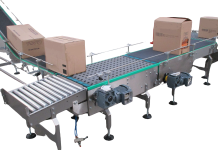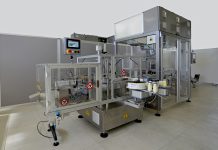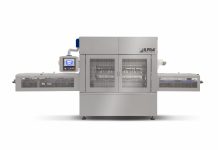 The terms “bioplastics”, “biopolymer” and “biopackaging” inherently accompany a message of sustainability and conservation of energy resources. These materials are obtained, in whole or in major part, from renewable sources. This includes packaging made from paper and “bioplastics” (or bio-based plastics). It is therefore not necessarily the case of natural products, but certainly of synthesized products starting from these. Bioplastics may have peculiar characteristics or be identical to traditional plastics if not for their origin (for example, bio-polyethylene, obtained from starch instead of petroleum). Research on these materials can now allow their production at reasonable costs (although still higher than those of petroleum-derived plastics) and their commercial use thanks to the attainment of suitable characteristics of machinability, strength, etc. However, they are still “young” materials, and the fact that they are produced from renewable sources must not let assume that they are always and necessarily better and safer. For example, some people are critical towards the fact that bioplastics are often produced from raw food materials (whose price tends to rise due to the increase in demand); as a matter of fact, the current levels of use are not yet critical (about 0.05% of the total maize produced is intended to produce bioplastics (1)), but may become it in the future. In its annual report “The State of Food and Agriculture 2008“, FAO expresses deep concern for the increasing allocation of food crops to the production of bioplastics and biofuels. The study addresses the use of non-food plant biomass: the second-generation biopolymers are obtained from agricultural waste (straw, stalks and corn leaves, potato peelings and tomatoes, exhausted oilseed cakes, etc.) instead of high-quality raw materials such as cereal grains. The predominant substance in agricultural waste is cellulose, glucose polymer such as starch, but, unlike it, it is very difficult to “digest” (not only for the superior animals but also for bacteria), from where the difficulty of using cellulose to produce bioplastics. Another solution would be the use of renewable non-food products, such as plants grown on marginal land, which would otherwise remain fallow: this is the case of “switchgrass” which is abundant in the American prairies. The European Bioplastics association (2) estimated that in 2007 the production of bioplastics amounted to 75-100,000 tons, out of a total of 58,000,000 tons of plastic, and about 0.2%. Experts believe that this amount may reach 5-10% in the future. The annual growth in production amounts to more than 20% (graphs in Picture 1), also because most of the available products have recently completed the process necessary for their marketing. The factors which mostly influence such growth will be investments to build large manufacturing plants, the affordability of renewable raw materials compared to oil, the thrust of the market generated by consumer demand to have “green” packaging and a suitable legal framework that favors those who produce and those who choose such packages. Always European Bioplastics estimates that by 2016 the areas of the world that will drive the market production of bioplastics will be South America and Asia.
The terms “bioplastics”, “biopolymer” and “biopackaging” inherently accompany a message of sustainability and conservation of energy resources. These materials are obtained, in whole or in major part, from renewable sources. This includes packaging made from paper and “bioplastics” (or bio-based plastics). It is therefore not necessarily the case of natural products, but certainly of synthesized products starting from these. Bioplastics may have peculiar characteristics or be identical to traditional plastics if not for their origin (for example, bio-polyethylene, obtained from starch instead of petroleum). Research on these materials can now allow their production at reasonable costs (although still higher than those of petroleum-derived plastics) and their commercial use thanks to the attainment of suitable characteristics of machinability, strength, etc. However, they are still “young” materials, and the fact that they are produced from renewable sources must not let assume that they are always and necessarily better and safer. For example, some people are critical towards the fact that bioplastics are often produced from raw food materials (whose price tends to rise due to the increase in demand); as a matter of fact, the current levels of use are not yet critical (about 0.05% of the total maize produced is intended to produce bioplastics (1)), but may become it in the future. In its annual report “The State of Food and Agriculture 2008“, FAO expresses deep concern for the increasing allocation of food crops to the production of bioplastics and biofuels. The study addresses the use of non-food plant biomass: the second-generation biopolymers are obtained from agricultural waste (straw, stalks and corn leaves, potato peelings and tomatoes, exhausted oilseed cakes, etc.) instead of high-quality raw materials such as cereal grains. The predominant substance in agricultural waste is cellulose, glucose polymer such as starch, but, unlike it, it is very difficult to “digest” (not only for the superior animals but also for bacteria), from where the difficulty of using cellulose to produce bioplastics. Another solution would be the use of renewable non-food products, such as plants grown on marginal land, which would otherwise remain fallow: this is the case of “switchgrass” which is abundant in the American prairies. The European Bioplastics association (2) estimated that in 2007 the production of bioplastics amounted to 75-100,000 tons, out of a total of 58,000,000 tons of plastic, and about 0.2%. Experts believe that this amount may reach 5-10% in the future. The annual growth in production amounts to more than 20% (graphs in Picture 1), also because most of the available products have recently completed the process necessary for their marketing. The factors which mostly influence such growth will be investments to build large manufacturing plants, the affordability of renewable raw materials compared to oil, the thrust of the market generated by consumer demand to have “green” packaging and a suitable legal framework that favors those who produce and those who choose such packages. Always European Bioplastics estimates that by 2016 the areas of the world that will drive the market production of bioplastics will be South America and Asia.
Major biopolymers and related products available on the market
 As for the possible sources of bioplastics, in the great majority of cases they come from plants, but also may include substances of animal (whey), bacterial (kefiran) and fungal (hydrophobins) origin. Bioplastics from biopolymers as such: the materials obtained in this way are all characterized by not always excellent mechanical properties, and are often difficult to reproduce, but they have the advantage of not requiring deep physical chemical transformations of the raw material, and so they can be produced with relative ease.
As for the possible sources of bioplastics, in the great majority of cases they come from plants, but also may include substances of animal (whey), bacterial (kefiran) and fungal (hydrophobins) origin. Bioplastics from biopolymers as such: the materials obtained in this way are all characterized by not always excellent mechanical properties, and are often difficult to reproduce, but they have the advantage of not requiring deep physical chemical transformations of the raw material, and so they can be produced with relative ease.
• Cellulose and derivatives: there exist dated products (for example, cellulose acetate or cellulose nitrate) and innovative products, such as Natureflex®: this product has a heart of cellulose coated with thin outer layers of plastic that do not affect, however, compostability. The result is a film which is resistant, transparent, colorable and metallizable, if necessary slightly permeable to gases and moisture, but devoid of heat-sealability and elasticity typical for example of polyethylene.
• Starch: used for long time, alone or more often mixed with other components, to obtain objects with various uses. A major commercial exponent obtained from this polymer is Mater-Bi ® family which can be used to produce biodegradable shopping bags, various types of packaging (food and non-food), films and containers for agriculture, toys, cutlery and disposable tableware, fiber textiles, etc. The addition of nanoparticles can improve mechanical properties and resistance to moisture.
• Proteins: from proteins of legumes skins, it is possible to produce a biodegradable film resistant to gas and lipids, which can make it more resistant to various treatments.
• Fibers: It is possible to obtain totally biodegradable biopolymers derived from food waste such as tomato skins, which are mixed with other ingredients of natural origin (e.g. alginates) obtaining ideal products for applications such as agricultural mulch film, containers for agricultural nursery and fruit and vegetables.
• Other: pectin from apples, citrus or other fruits/vegetables, wheat or soy protein (e.g. gluten), egg albumin, gelatin, collagen, protein, whey, various lingo-cellulosic-based materials, etc. Bioplastics from monomers of natural origin: using chemical processes and/or bacteria GMOs placed in appropriate bioreactors, it is possible to obtain monomers from polymers such as starch and (in the near future) cellulose from plant waste, in both cases glucose molecules are obtained which are then processed and re-polymerized.
• PLA (polylactic acid): chemically aliphatic polyester, it is the most representative biopolymer in terms of volumes produced and used for food packaging. It is obtained from the extraction of sugars from food rich in carbohydrates (for example, cereal flours, sugar beet or sugar cane), the fermentation of these into lactic acid, its transformation into cyclic lactide and finally polymerization into PLA. This material is biodegradable, thermoplastic, very transparent, rather rigid and less machinable than traditional polyolefins; its mechanical properties, in particular poor resistance to temperature and humidity, can be improved with the addition of suitable additives, even in the form of nanoparticles. It remains, however, a material primarily intended for cold food due to poor heat resistance. The barrier properties to PLA gas can be improved by modifying the surface with appropriate coating, opening the possibility to use it in a protective atmosphere for packed foods. Thanks to the significant technical progress of this material, which until a few years ago was not considered suitable for contact with wet food, it is now even possible to produce bottles for mineral water, albeit with reduced shelf life than traditional PET bottles: after a few months (especially in not fresh warehouses) PLA bottles can no longer guarantee the internal volume of water since this begins to evaporate through the PLA layer, also monomers of lactic acid begin to migrate into the water.
• PHA (polyhydroxyalkanoates): polyesters obtained by bacterial metabolism (e.g. by Bacillus megaterium GMO) of sugar or starch or by special plants, often also GMO; they have good technical characteristics and are totally biodegradable, but rather expensive and therefore currently not used.
Environmental impact of bioplastics
 Common feature that associates (or should associate) all types of biopackaging is to have a value of LCA (Life Cycle Assessment) less than that of traditional packaging, i.e. lower environmental impact both in the production and disposal phase. It would be desirable for bioplastics to take the path of composting, together with organic waste, but it should be noted that not all biodegradable materials are compostable (i.e. quickly decomposable and without releasing any harmful substance). Even not all bioplastics are biodegradable: the higher the technical performance of these materials (strength, moisture resistance and the passage of gas, etc.) more reduced is their biodegradability (3). Then there are bioplastics, such as bio-PE, which are obtained from renewable sources instead of petroleum but they are in all respects similar to classical polymers, including non-biodegradability. Even in the case of compostable bioplastics, one must consider the expertise of the average consumers to recognize them and use/dispose them properly: often, for example the new biodegradable carrier bags are used as normal rubbish bags (thus ending up in the waste collection), rather than as moist bags. Furthermore, the organization of municipal waste collection and waste treatment is not always able to take full advantage of the positive characteristics of these materials.
Common feature that associates (or should associate) all types of biopackaging is to have a value of LCA (Life Cycle Assessment) less than that of traditional packaging, i.e. lower environmental impact both in the production and disposal phase. It would be desirable for bioplastics to take the path of composting, together with organic waste, but it should be noted that not all biodegradable materials are compostable (i.e. quickly decomposable and without releasing any harmful substance). Even not all bioplastics are biodegradable: the higher the technical performance of these materials (strength, moisture resistance and the passage of gas, etc.) more reduced is their biodegradability (3). Then there are bioplastics, such as bio-PE, which are obtained from renewable sources instead of petroleum but they are in all respects similar to classical polymers, including non-biodegradability. Even in the case of compostable bioplastics, one must consider the expertise of the average consumers to recognize them and use/dispose them properly: often, for example the new biodegradable carrier bags are used as normal rubbish bags (thus ending up in the waste collection), rather than as moist bags. Furthermore, the organization of municipal waste collection and waste treatment is not always able to take full advantage of the positive characteristics of these materials.
Notes on legislation and safety of bioplastics used for food contact
Bioplastics (which are not part of biopolymers such as cellulose derivatives, starch, fiber, etc.) must in principle be subject to all the requirements for common plastics, and then follow in particular the new European legislation (Regulation 10/2011 “PIM”), but neither at European nor Italian level clear guidelines have yet been formulated which producers and users of these materials can refer to. This does not lighten but rather increases the work of producers: bioplastics are less inert, with respect to common plastics, towards water and organic substances (characteristic at the base of biodegradability!) of which foods are constituted; it is therefore essential for an accurate security assessment during their designing.
References
1) “Food versus Fuelling the United States – Can Both Win in the Era of Ethanol?” Institute for Agriculture and Trade Policy, Sept 2007
2) www.european-bioplastics.org
3) V. Siracusa, P. Rocculi, S. Romani, M. Dalla Rosa, Biodegradable polymers for food packaging: a review. Trends in Food Science & Technology, 19 (2008) 634-643



